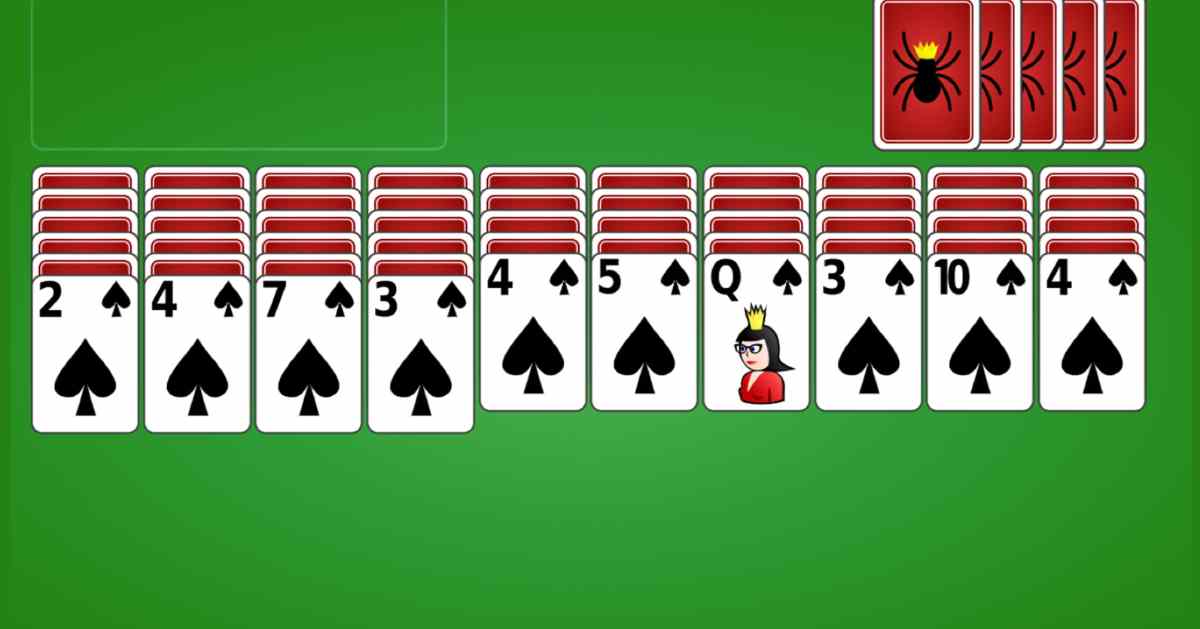Spider Solitaire, Two Suits, One Goal: How To Play And Master The Game

In the vast realm of digital card games, few titles have earned as much respect and quiet reverence as Spider Solitaire. Among its many versions, the two-suit Spider Solitaire perfectly balances challenge and playability. It offers enough complexity to keep players engaged without the steep difficulty curve of the four-suit version. This variation represents a satisfying test of patience, planning, and problem-solving for casual gamers and logic enthusiasts alike.
Whether you’re discovering Spider Solitaire for the first time or looking to sharpen your strategy, this guide will walk you through the essentials of the two-suit game—and how to master it.
Understanding the Basics of Spider Solitaire (Two Suits)
At its core, Spider Solitaire is a game of arranging cards in descending order from King to Ace within the same suit. The two-suit version typically uses spades and hearts, offering more difficulty than the one-suit game but still accessible compared to the full four-suit challenge.
The game begins with 54 cards dealt into 10 tableau columns—six cards in the first four columns and five in the remaining six. The top card of each column is turned face-up. The remaining cards are placed in the stockpile and can be dealt in ten rows when no further moves are possible on the tableau.
The objective? To build complete sequences of cards from King to Ace of the same suit, which are then removed from the tableau. The game is won when all eight such sequences (four per suit) have been successfully built and cleared.
[ Read About: The Ultimate Solitaire Challenge ]
Why the Two-Suit Version Appeals to Strategic Minds
Two-suit Spider Solitaire demands forward-thinking and adaptability. It encourages players to weigh short-term gains against long-term positioning, especially when mixing suits temporarily to create open space.
The game also introduces an element of risk, as moving mixed-suit sequences can limit your ability to build complete suit runs. This encourages meticulous planning, not unlike the process of debugging a complex software system or managing resources in a business strategy game.
A BBC report on cognitive performance highlights how strategy-based games like solitaire can help improve executive function and enhance focus. It’s no surprise that Spider Solitaire remains a favorite among analytical thinkers.
Essential Strategies for Winning
Mastering Spider Solitaire, especially in the two-suit format, requires more than luck. Here are some key strategies:
- Expose Hidden Cards Early: Prioritize moves that reveal face-down cards in the tableau. Each revealed card expands your options and unlocks potential sequences.
- Create Empty Columns: An empty tableau column is a powerful tool. It gives you a space to move stacks and reorganize sequences more freely.
- Build with the Same Suit When Possible: While it’s tempting to mix suits to keep cards moving, strive to build sequences within the same suit to maintain maneuverability.
- Don’t Rush to Use the Stockpile: Dealing new cards too soon can bury potential plays. Exhaust all current moves before drawing from the stock.
- Undo Wisely: Most digital versions allow an undo feature—use it not as a crutch but as a learning tool to explore different outcomes.
Common Pitfalls and How to Avoid Them
Even seasoned players fall into traps. A frequent mistake is moving a King into an empty column too soon. While it may seem like progress, it can limit your ability to shift more valuable sequences later. Similarly, building long mixed-suit stacks can result in an immovable tableau.
To sharpen your technique and learn how to play spider solitaire effectively, it’s worth reviewing detailed game instructions and watching sample gameplay. This ensures you fully understand how card movements and suit matching influence your long-term success.
Spider Solitaire in the Digital Age
The shift from physical cards to online platforms has made Spider Solitaire more accessible than ever. Whether you’re playing on your desktop during a coffee break or tackling a few hands on your tablet, modern versions offer smoother interfaces, hint systems, and even daily challenges.
Interestingly, card games like Spider Solitaire have seen a resurgence in the tech community, as noted by The Verge. Professionals in fast-paced industries often turn to mentally engaging but calming games to reset between demanding tasks.
If you’re interested in more options beyond Spider Solitaire, many players also explore a popular card game collection that includes other strategic favorites like Hearts, Spades, and Euchre—perfect for anyone who enjoys a good mental challenge.
Final Thoughts: Mastery Is in the Method
Spider Solitaire (two suits) is more than a time-waster; it’s a game of logic, rhythm, and foresight. Every decision impacts the next set of options, much like solving a complex problem or managing a project. For those willing to embrace the challenge, the game offers both satisfaction and a mental workout.
Success doesn’t come from frantic clicking or relying on luck. It comes from reading the tableau, predicting outcomes, and staying calm under pressure. As with any skill, consistent play and reflection will lead to gradual improvement.
So, whether you’re a newcomer or a seasoned strategist, give two-suit Spider Solitaire a try. Your brain—and your sense of accomplishment—will thank you.
